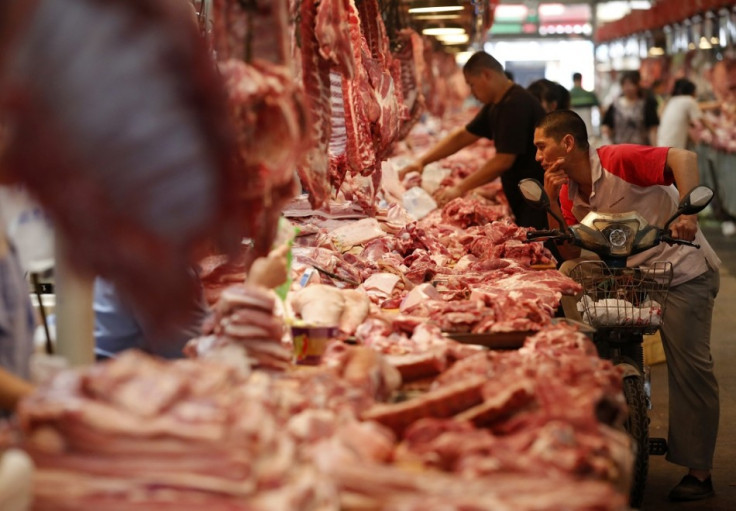China and India Driving Global Meat Consumption but West Still Worst Offender

The global consumption of meat is increasing with China and India driving consumption levels due to their fast-growing economies, a report has found.
Published in the Proceedings of the National Academy of Sciences and reported in Nature, researchers looked at what people eat and where, in a comprehensive study of global food consumption.
The scientists for established the "trophic level" for humans using a metric system to position our species in the food chain. The authors found we are somewhere on the same level as pigs and anchovies at around 2.21.
Explaining the trophic system, algae, which makes its own food is level 1. Rabbits that eat plants are level 2 and foxes that eat herbivores are 3. Cod, which eats other fish, is level four, and top predators, such as polar bears and orcas, hold levels up to 5.5 - the highest on the scale.
Researchers showed that humans increased consumption in fat and meat has pushed up our trophic level by 0.06 points, or three %, in the last 50 years.
Study leader Sylvain Bonhommeau, from the French Research Institute for Exploitation of the Sea in Sète, said: "We are closer to herbivore than carnivore. It changes the preconception of being top predator. If we all increase our trophic level, we'll start to have a bigger impact on ecosystems."
Commenting on the study, Thomas Kastner, an environmental scientist at Alpen-Adria University in Vienna, said: "It seems like a small difference, but when you think about how it's calculated, it's big. A change by 0.1 means you are eating considerably more meat or animal-based foods."

Findings showed that without China and India, meat consumption has remained largely stable over the last 50 years. However, as both countries' economies grew, diets changed to include more meat and, pushing up consumption levels.
However, despite driving the increase, findings also showed that China and India still have among the lowest trophic levels in the world, with 2.1 and 2.2 respectively.
The countries with the highest trophic levels include Mongolia, Sweden and Finland, which have levels of 2.5, and the whole of Western Europe, USA, Australia, Argentina, Sudan, Mauritania, Kazakhstan, Pakistan and Turkmenistan, which all have a level of 2.4.
A spokesman for the People for the Ethical Treatment for Animals (Peta), said the study shows the need for more people to take up vegan lifestyles, as the livestock industry is for 18% of global greenhouse-gas emissions, accounting for more than all modes of transport combined.
He also warned that UN officials have already said all humans will have to go vegan if mankind is to alleviate hunger, fuel poverty and the worst effects of climate change.
"Adding more meat-eaters is bad news for the planet and for future generations as the meat industry is recognised as a top contributor to the most serious environmental problems we have, including climate change, water depletion, fossil fuel use, chemical use and deforestation," the spokesman said.
"It means that millions more animals are raised on filthy, severely crowded factory farms; dehorned, debeaked and otherwise mutilated without painkillers and slaughtered in ways that would horrify any decent person - simply to satisfy an unsustainable demand for meat.
"Fortunately, evidence suggests that younger people are more likely to eschew meat than older generations. In the UK, for example, 18 to 24-year-olds are three times more likely to be vegetarian compared to the national average.
© Copyright IBTimes 2025. All rights reserved.






















